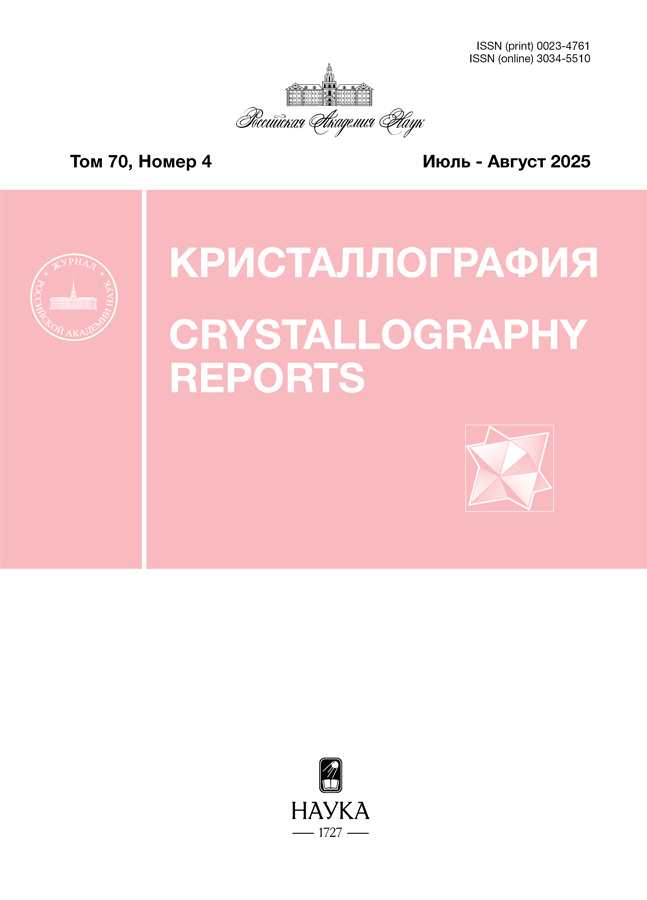Спин-поляризованные состояния в электронной структуре Pt(111) и графен/Pt(111)
- Authors: Гогина А.А.1, Рыбкина А.А.1, Тарасов А.В.1, Шикин А.М.1
-
Affiliations:
- Санкт-Петербургский государственный университет
- Issue: Vol 69, No 1 (2024)
- Pages: 99-104
- Section: ПОВЕРХНОСТЬ, ТОНКИЕ ПЛЕНКИ
- URL: https://ter-arkhiv.ru/0023-4761/article/view/673242
- DOI: https://doi.org/10.31857/S0023476124010143
- EDN: https://elibrary.ru/slxagc
- ID: 673242
Cite item
Abstract
С использованием методов фотоэлектронной спектроскопии с угловым разрешением и теории функционала плотности проведено детальное исследование поверхностных спин-поляризованных состояний в электронной структуре Pt(111) и графен/Pt(111). Результаты показывают наличие конусоподобных поверхностных состояний вблизи уровня Ферми в окрестности точки поверхностной зоны Бриллюэна платины для обеих систем. Теоретические расчеты подтверждают, что данные состояния являются спин-поляризованными поверхностными состояниями монокристалла Pt(111).
Full Text
About the authors
А. А. Гогина
Санкт-Петербургский государственный университет
Author for correspondence.
Email: alevtina_gogina@mail.ru
Russian Federation, г. Санкт-Петербург
А. А. Рыбкина
Санкт-Петербургский государственный университет
Email: alevtina_gogina@mail.ru
Russian Federation, г. Санкт-Петербург
А. В. Тарасов
Санкт-Петербургский государственный университет
Email: alevtina_gogina@mail.ru
Russian Federation, г. Санкт-Петербург
А. М. Шикин
Санкт-Петербургский государственный университет
Email: alevtina_gogina@mail.ru
Russian Federation, г. Санкт-Петербург
References
- Klimovskikh I.I., Tsirkin S.S., Rybkin A.G. et al. // Phys. Rev. B. 2014. V. 90. № 23. P. 235431. https://doi.org/10.1103/physrevb.90.235431
- Shikin A.M., Rybkina A.A., Rybkin A.G. et al. // Appl. Phys. Lett. 2014. V. 105. № 4. P. 042407. https://doi.org/10.1063/1.4891361
- Gogina A.A., Tarasov A.V., Eryzhenkov A.V. et al. // JETP Lett. 2023. V. 117. № 2. P. 1. https://doi.org/10.1134/S0021364022602706
- Rybkin A.G., Rybkina A.A., Tarasov A.V. et al. // Appl. Surf. Sci. 2020. V. 526. P. 146687. https://doi.org/10.1016/j.apsusc.2020.146687
- Rybkina A.A., Rybkin A.G., Klimovskikh I.I. et al. // Nanotechnology. 2020. V. 31. № 16. P. 165201. https://doi.org/10.1088/1361-6528/ab6470
- Mellnik A.R., Lee J.S., Richardella A. et al. // Nature. 2014. V. 511. № 7510. P. 449. https://doi.org/10.1038/nature13534
- Dal Corso A. // Surf. Sci. 2015. V. 637. P. 106. https://doi.org/10.1016/j.susc.2015.03.013
- Silkin I.V., Koroteev Y.M., Silkin V.M. et al. // Materials. 2018. V. 11. № 12. P. 2569. https://doi.org/10.3390/ma11122569
- Herrera-Suárez H.J., Rubio-Ponce A., Olguín D. // Comput. Mater. Sci. 2012. V. 56. P. 141. https://doi.org/10.1016/j.commatsci.2011.11.017
- Koroteev Y.M., Chulkov E.V. // Surf. Sci. 2018. V. 678. P. 99. https://doi.org/10.1016/j.susc.2018.04.007
- Kim Y.S., Jeon S.H., Bostwick A. et al. // Phys. Chem. Chem. Phys. 2013. V. 15. № 43. P. 19019. https://doi.org/10.1039/C3CP53376J
- Jung J., Kang S., Nicolaï L. et al. // ACS Catal. 2021. V. 12. № 1. P. 219. https://doi.org/10.1021/acscatal.1c04566
- Ozaki T. // Phys. Rev. B. 2003. V. 67. № 15. P. 155108. https://doi.org/10.1103/PhysRevB.67.155108
- Ozaki T., Kino H. // Phys. Rev. B. 2004. V. 69. № 19. P. 195113. https://doi.org/10.1103/PhysRevB.69.195113
- Perdew J.P., Wang Y. // Phys. Rev. B. 1992. V. 45. № 23. P. 13244. https://doi.org/10.1103/PhysRevB.45.13244
- Lee C.C., Yamada-Takamura Y., Ozaki T. // J. Condens. Matter Phys. 2013. V. 25. № 34. P. 345501. https://doi.org/10.1088/0953-8984/25/34/345501
- Momma K., Izumi F. // J. Appl. Cryst. 2011. V. 44. № 6. P. 1272. https://doi.org/10.1107/S0021889811038970
- Rybkin A.G., Krasovskii E.E., Marchenko D. et al. // Phys. Rev. B. 2012. V. 86. № 3. P. 035117. https://doi.org/10.1103/PhysRevB.86.035117
Supplementary files















